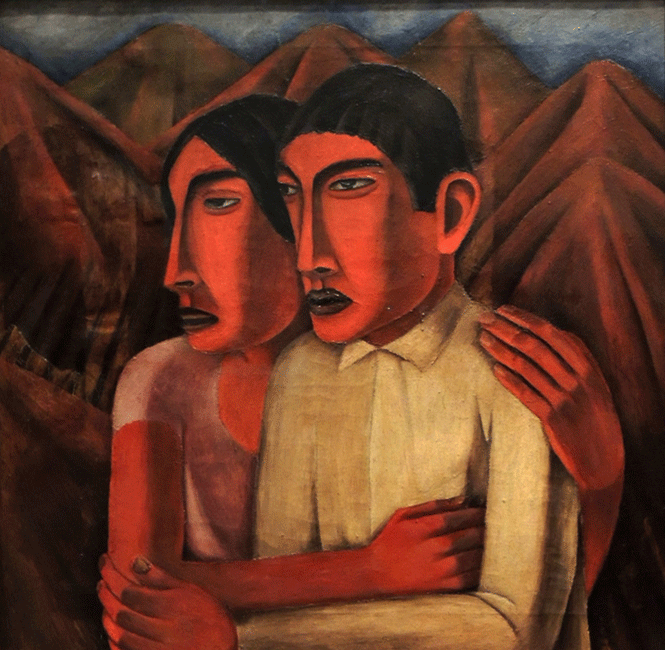Source: WTL photograph© at the Special Exhibition of "Paint the Revolution: Mexican Modernism 1910 - 1950," at the Philadelphia Art Museum, December 13, 2016.
Image:
"Man and Woman" (1926), by Rufino Tamayo (1899-1991). Oil on canvas.
Comments: Rufino Tamayo began studying art at Mexico City's Escuela Nacional de Artes Plásticas de San Carlos 1917. Early on he was influenced by Cubism--you can see such influence in this painting even though Tamayo has moved beyond this French movement--but, when he began working in the Department of Ethnographic Drawings in 1921 under the guidance of José Vasconcelos (1882-1959), he infused his works with distinctively Mexican elements. Soon thereafter Vasconcelos named him head of this department. Notice the limited color palette in this painting. Tamayo is quoted as having said "As the number of colors we use decreases, the wealth of possibilities increases" and that an artist (i.e., he) can gain greater impact and meaning by using fewer colors. It should be noted that Tamayo is considered as one of the four most prominent Mexican muralists along with Rivera, Orozco, and Siqueiros even though he supported the Mexican Revolution less fervently than the other three.
For other works by Tamayo and commentaries about his life and career in this series: see: => Page #33; and => Page #36.
Humanities Questions: Analyze how Tamayo achieves a distinctly Mexican painting while using Cubist techniques, but moving beyond them as seen in the most famous of all Cubist paintings; namely, Picasso's 1907 "Les Demoiselles d'Avignon." Find this last painting online and then pay particular attention to the nearly hidden figure in Tamayo's painting on the far left of the canvas.


